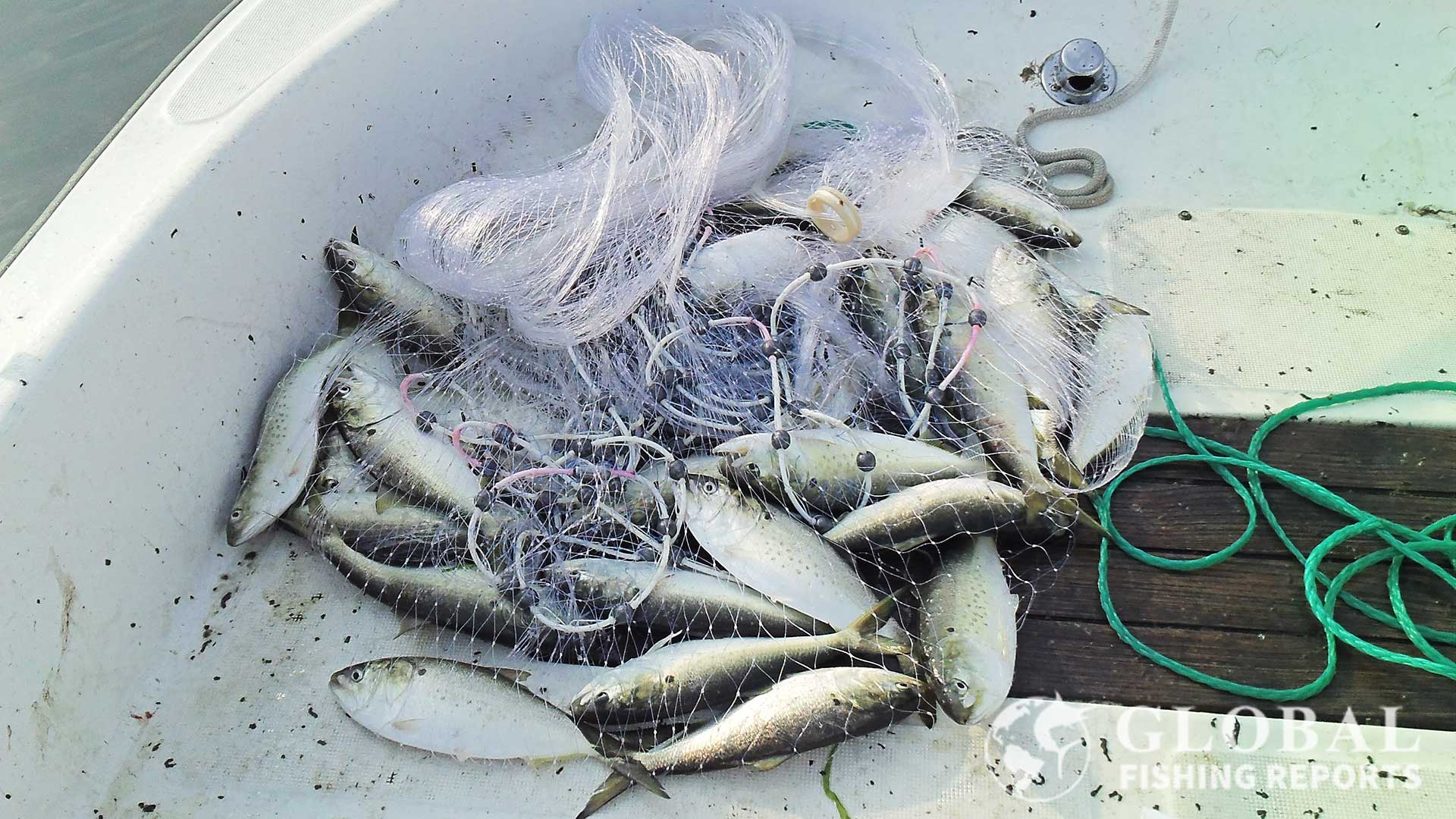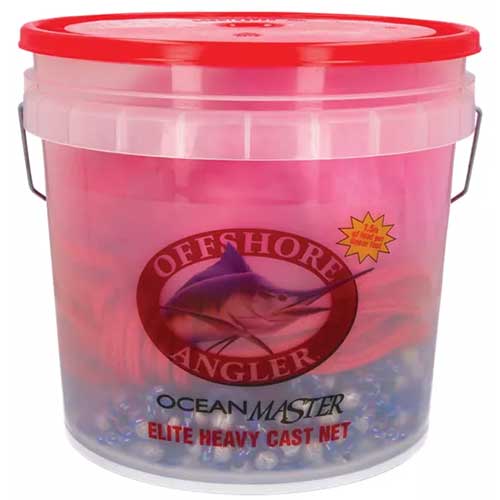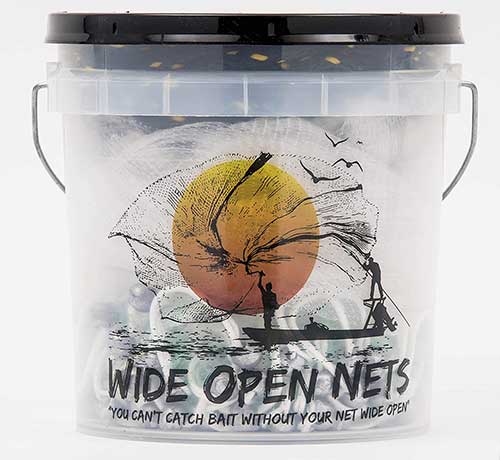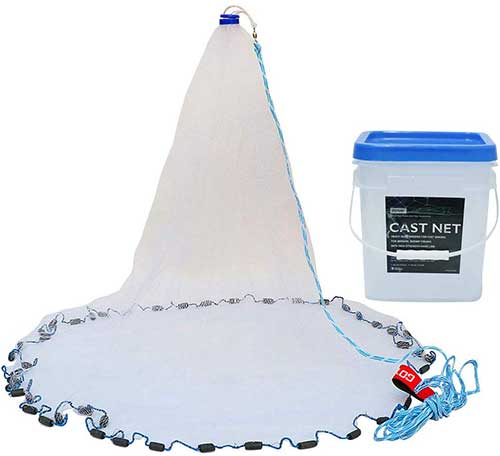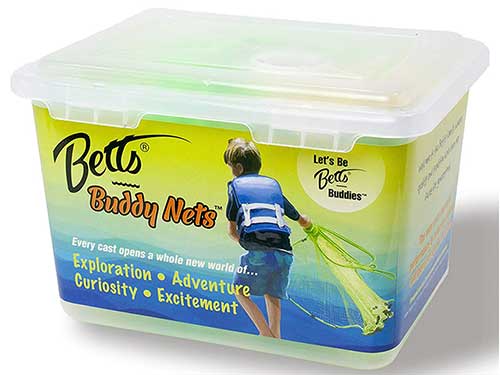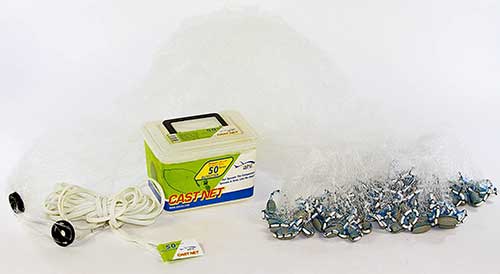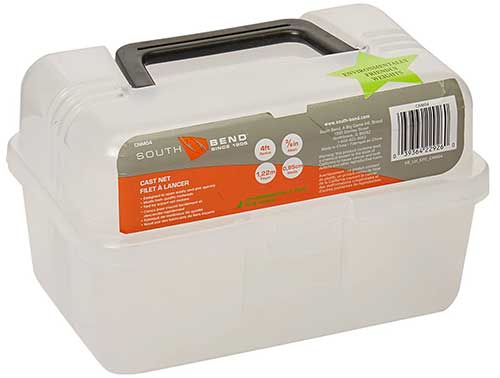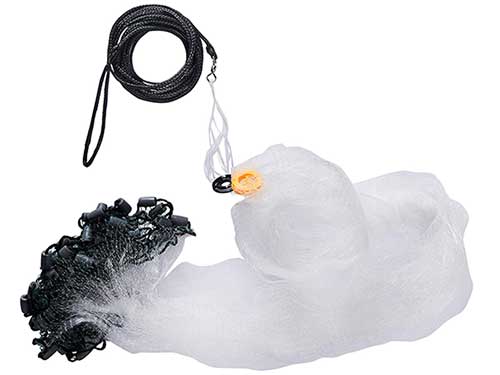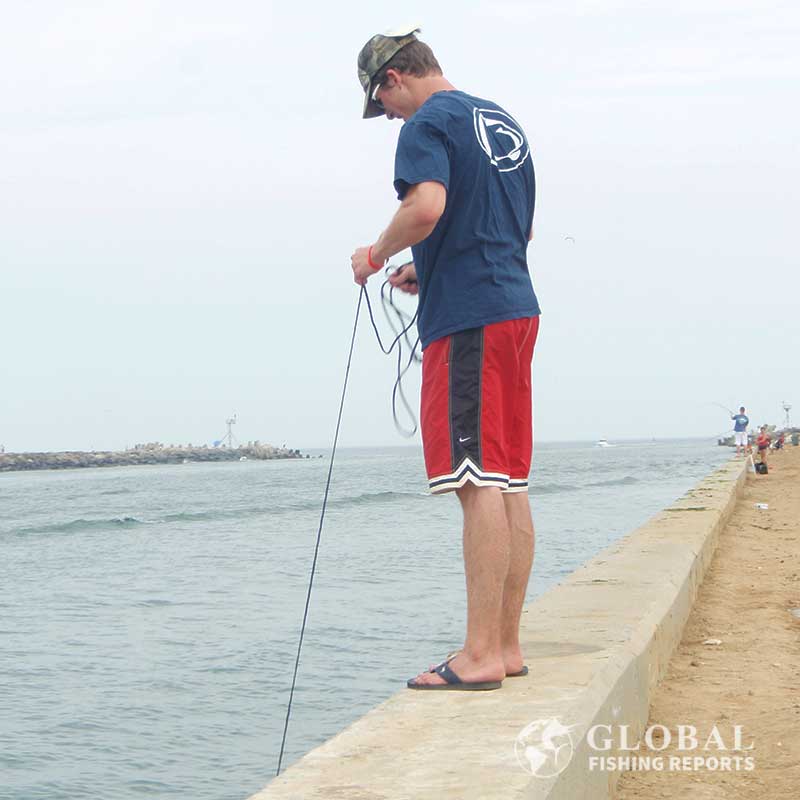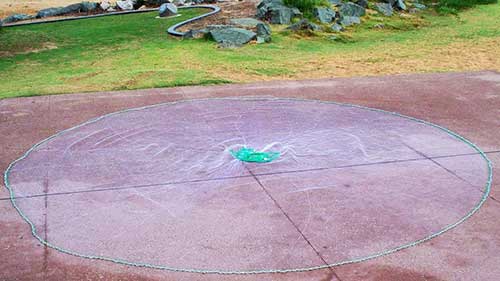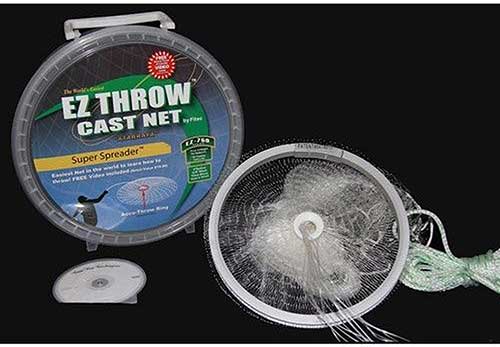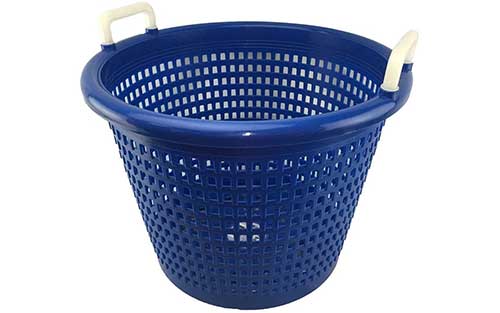As a charter captain, the end of every successful fishing trip ends with filleting fish. Having a quality sharp knife is required. If the knife is dull the process becomes slow and dangerous. It is actually much safer to fillet fish with a sharp knife than with a dull knife.
Before I start cleaning fish the first thing I do every time is sharpen the fillet knife with a carbide knife sharpener. Some people prefer using a stone or electric sharpener but carbide sharpeners are the fastest way to get a sharp edge on the knife.
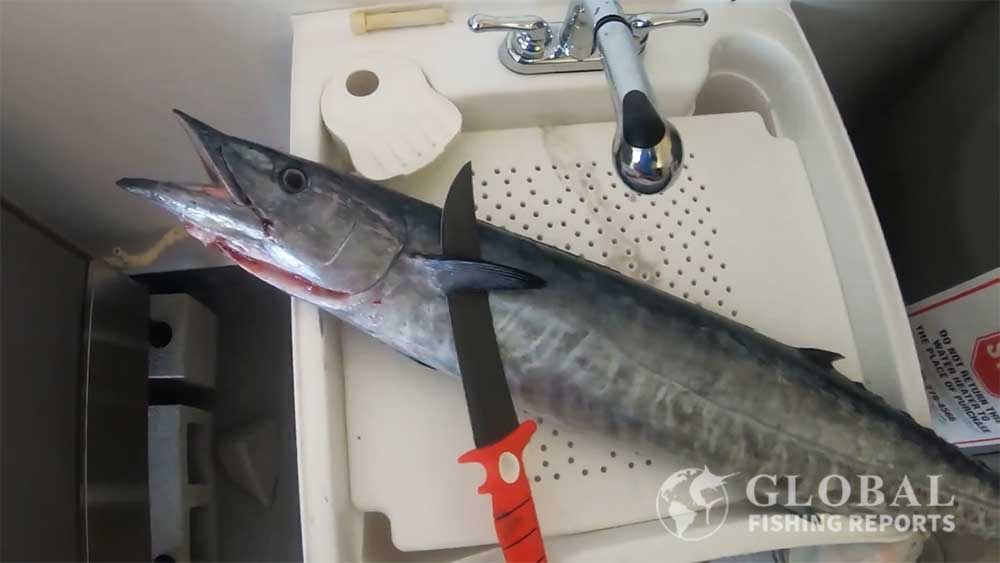
In the photo above I am about to filet a wahoo with a 9-inch Bubba Blade fillet knife.
Standard vs. Electric Fillet Knives
One decision to make when buying a fillet knife is whether to buy an electric fillet knife. Standard manual fillet knives offer the simplicity and reliability that many experienced anglers prefer. There are no batteries to charge, no cords to manage, and no motors that can fail. A quality manual knife can for years with proper care. Its simplicity means there are fewer things that can go wrong, especially in harsh saltwater environments. The direct connection between hand and blade allows for precise control and feedback that many find essential for clean filleting.
Most people do not realize how nice an electric fillet knife is until they try one. These work especially well on small bony fish like grunts, snappers, or panfish. The electric knife also makes removing the skin much easier. This knife has a cord or is powered by a rechargeable battery. With all the power of an electric knife realize that it can get hot. Be prepared to clean some fish and take a break for the knife to cool down. Lets start by examining what makes electric knives unique before discussing traditional manual options.
Electric Fillet Knives
Electric fillet knives use motorized, reciprocating blades that work like a small electric saw. These knives do most of the cutting work for you, requiring less physical effort than manual knives. This can be a significant advantage when cleaning multiple fish, as it reduces hand fatigue.
The newest models of electric fillet knives include cordless options that are powered by rechargeable batteries. This is a major improvement over older corded models, especially for those who clean fish away from reliable power sources.
Electric knives excel at:
- Processing large quantities of fish quickly
- Cutting through tougher fish skin with less effort
- Reducing hand fatigue during extended filleting sessions
- Consistent cutting through repetitive tasks
- Removing skin from fillets efficiently
However, electric knives do have some drawbacks. They are typically heavier than manual knives, and require power (either from an outlet or battery). Electric knives have more components that can fail and generally offer less precision for detailed work around complex bone structures.
1. Bubba Blade Electric Fillet knife
This portable electric knife comes with 4 stainless steel blades. The blades are a 7-inch flex, 9-inch flex, 9-inch stiff, and 12-inch stiff. The blades are coated with titanium nitride to make them corrosion-resistant.
Includes with this knife are two lithium-ion batteries and a premium EVA storage case. The handle on the case has an LED battery indicator to show the battery storage level. The weight of the knife is 1.11 pounds.
This knife is very similar to other electric knives but is cordless. This means that it can be used even when a 120-volt outlet is not available. Also not having to deal with a cord is nice when filleting fish.
2. Rapala Electric Fillet Knife
The Rapala electric fillet knife has 7-1/2 inch blades. This is considered a heavy-duty fillet knife that has both high power and high speed. This plugs into the standard wall outlets and has an 8-foot power cord.
Having a sharp fillet knife gets the job done. Most people do not realize how nice an electric fillet knife is until they try one. These work especially good on small bony fish like grunts, snappers, or panfish. The electric knife also makes removing the skin much easier.
This knife has a cord and is very powerful. With all the power of an electric knife realize that it can get hot. Be prepared to clean some fish and take a break for the knife to cool down. If you know you are consistently going to have piles of fish to clean having two electric and switching back and forth between knives is a good idea.
There are electric fillet knives that have rechargeable batteries and are cordless.
3. Mister Twister Electric Fillet Knife
The mister twister electric fillet knife comes with 7-inch stainless steel blades. 9-inch blades can be purchased for about $10. The dual blades are serrated. The device has a safety lock and easy blade release. There is also a Mister Twister Saltwater Piranha which is blue and white. The saltwater version has more torque and seed for cutting up larger and tougher saltwater fish.
This device is built similar to many meat-cutting electric knives. Many reviews claim that his knife works just as well as more expensive electric knives. This knife works great to clean crappie, perch, grunts, mackerel, snapper, and rockfish.
Standard Fillet Knives
Manual fillet knives are the traditional choice and remain popular for good reason. A fish fillet knife offers the user a much higher level of control, specially crafted for the act of filleting. These are typically 4″ to 11″ in length and tend to be much lighter than most other kitchen cutlery.
Fish fillet knives, coupled with amazing flexibility, utilize a blade point that differs from a traditional knife. These are generally referred to as “trailing points”. A trailing point makes the act of precision slicing and skinning much easier by implementing a slight curvature at the end of the knife. This is generally used for small and precise cuts and makes maneuvering around bones a much easier and more accurate task.
Bevels on the blade constructed at a 12 to 17-degree angle make for an extremely sharp and thin edge, focusing on precision and ease of use over durability. These are not to be used on hard surfaces, like making contact with a cutting board. It is good to have a separate knife for chopping bait and similar tasks.
The angled bevel is the reason fish fillet knives are rather delicate and are easily damaged when they contact something hard. Trading off durability, however, allows for extremely easy entry points and enhanced maneuverability, especially in the rib and backbone areas. A bevel makes cutting out the meat without hitting bones significantly more efficient than other styles of knives.
4. Bubba Blade 7-inch
This fishing fillet knife has 7-inch Ti-Nitride coated stainless steel blades. The knife is equipped with a non-slip textured grip, a safety guard, and a trigger grip. A full tang tapered blade offers incredible flexibility. The sheath for the knife includes a nylon belt loop.
When I see charter captains filleting fish about half of them are using a bubba blade. Another large percentage use the dexter knife shown below. The Buba Blade is nice cause it has a soft grip and coated corrosion-resistant blades. It is a bit more expensive but is still a great value.
Buba blade also makes fillet knives that come in 5-inch, 6-inch, 9-inch, and 12-inch sizes. I have used the 7-inch knife to fillet lots of fish. In my experience, the 7-inch is the right size for all types of fish. The 9-inch is way to big unless you have the serrated version and need to section fish by cutting through them. The 9-inch it is too large and I do not feel I have the same level of control over the knife. So even for huge fish, the 7-inch is best.
5. Dexter Russell Basics Fillet Knife
Dexter Fillet knife
Estimated Price: $12
This Dexter narrow fillet knife is 8-inches in length. It is made in the USA and has a nice textured white polypropylene handle. There is also a 7-inch version of this style Dexter knife that works great.
This is the best value fillet knife on the market. With the plastic sheath and sharpener below you will have everything you need to clean hundreds of fish.
This is the knife that I typically use to fillet fish. I also see many other charter captains using this knife. It is a quality knife at an affordable price. The blade is constructed from high-carbon stainless steel. This knife works great at filleting a large variety of fish including salmon, wahoo, mackerel, mahi-mahi, halibut, crappie, and rockfish,
This knife is rated by the National Sanitation Foundation (NSF). These knives can be found over all the world in the hands of professional fishermen for good reason! The firm handle actually gives you a better feel and control over the bland than large soft grips in my opinion.
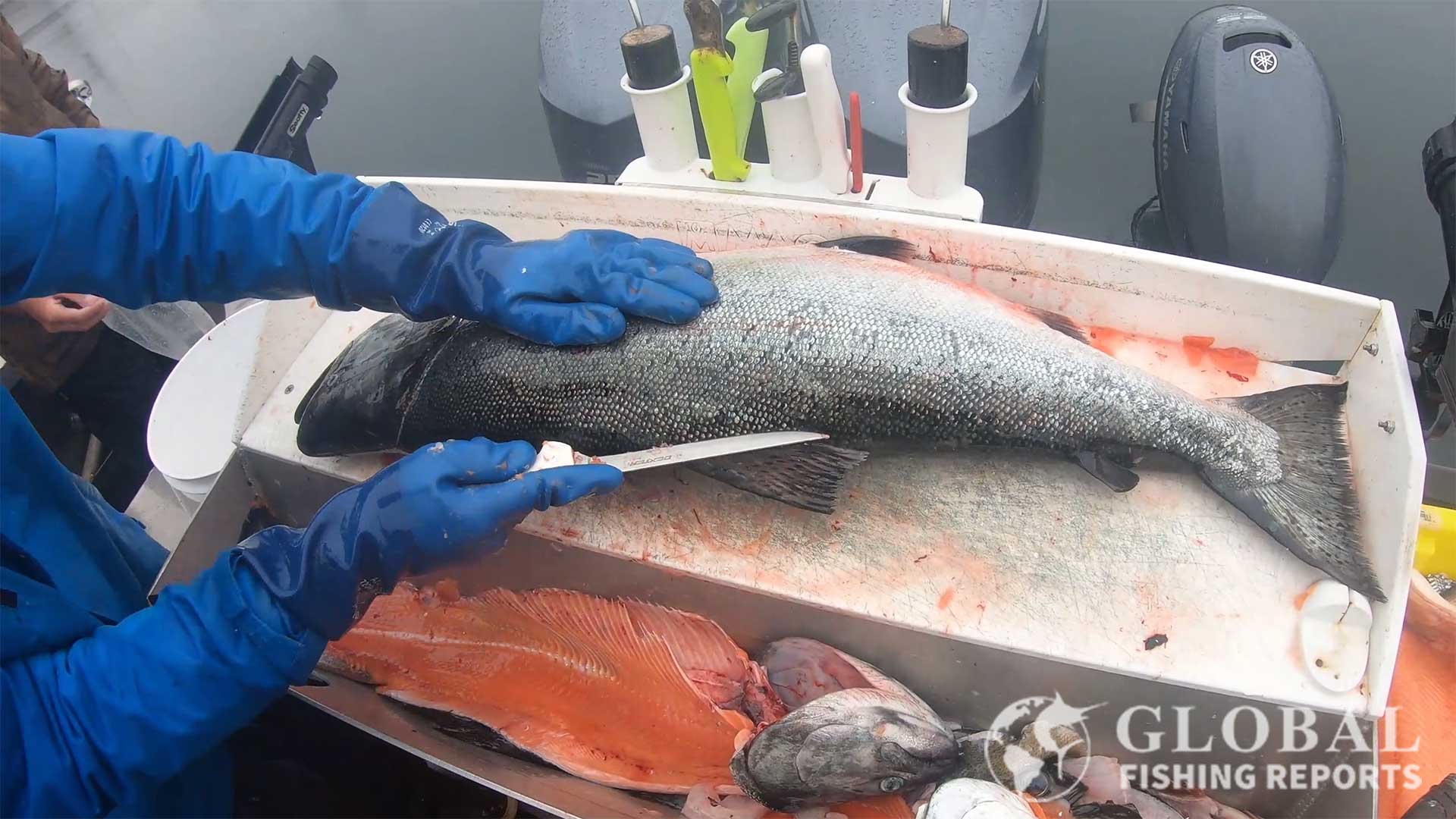
Dexter Fillet Knife Sheath
This sheath holds most Dexter knives that are 6 inches, 7 inches, 8 inches, or 9 inches. This is a hard plastic sheath with drainage holes. The sheath is made in the USA.
Dexter knives are awesome but typically do not come with sheaths. This hard plastic sheath is great for securing to the boat so that a fillet knife is quickly accessible.
Carbide Sharpener
The AccuSharp carbide knife sharpener is made with diamond-honed Tungsten carbide. There is a full-length finger guard over the sharpener. The sharpeners will not rust and can be cleaned in with soap and water or in the dishwasher. The pieces of carbide are replaceable.
In the video above I show how to sharpen a fillet knife with a carbide knife sharpener. The knife is run the entire way through the sharpener about 10 times. This is a great way to quickly sharpen a knife before starting to fillet fish. This may seem super simple but a lot of people do use this tool the wrong way.
In the video above my friend captain Josh is cleaning king salmon in Sitka Alaska with this knife. I have used this knife to clean salmon, halibut, mahi-mahi, tuna, mackerel, yellowtail snappers, and many other types of fish.
6. Bubba Blade Folding Filler Knife
The Bubba Lucky Lew Folding Fillet knives come in 5-inch and 7-inch sizes. This knife is built with the same non-slip handle and titanium-coated stainless steel blade as the popular Bubba fixed blade knives. The difference is that this can be folded up to easily travel with. Most folding knives are to short, thick, and stiff to work as a good fish fillet knife.
Both the 5-inch and the 7-inch have a 6-inch handle. These are actually quite large knifes. The problem it solves it to be able to store it more compact and safe when traveling. A fixed blade knife is nice but it is also bulky and requires a quality sheath. It can also be difficult to find a good place to store our mount a fillet knife on a boat. If it falls out of the holder it is a safety hazard. A folding knife can sore in compartments and tackle boxes much easier.
The 7-inch will be able to fillet fish of all sizes from small panfish to large tuna or halibut. The five in version will also work for most fish but if you will only be cleaning smaller fish then the 5-inch version would be sufficient.
7. Victorinox Swiss Army Boning Knife
The Swiss Army Boning knife is 6-inches in length. The blade options include straight or curved. The stiffness can also be selected at levels of flexible, semi-flexible or stiff blades.
When filleting most fish you want a flexible knife so the blade can bend flat to run right along with the bones of the fish. If you need to chop up fish or cut threw fish having a more firm blade is needed.
This knife is certified by the National Sanitary Foundation and is dishwasher safe. This is a great knife to use a home or on the boat.
In the video above I show how to fillet a halibut. This is done with a 7-inch fillet knife and you can see it works great to fillet large fish. The 6-inch Swiss Army knife is similar to the Dexter and will fillet both small and huge fish. Swiss Army is known for their folding knives but they also make quality fillet knives.
8. Cuda 7-inch Titanium Bonded Fillet Knife
The Cuda 7-inch Titanium bonded fillet knife is great for fillet all size fish. It also comes with a plastic sheath. I have used this knife to clean many mahi-mahi, tuna, and snapper. The knife we had was always just left on the fillet table and it did get rusty over time. If you take care of this knife it will work for freshwater and saltwater use.
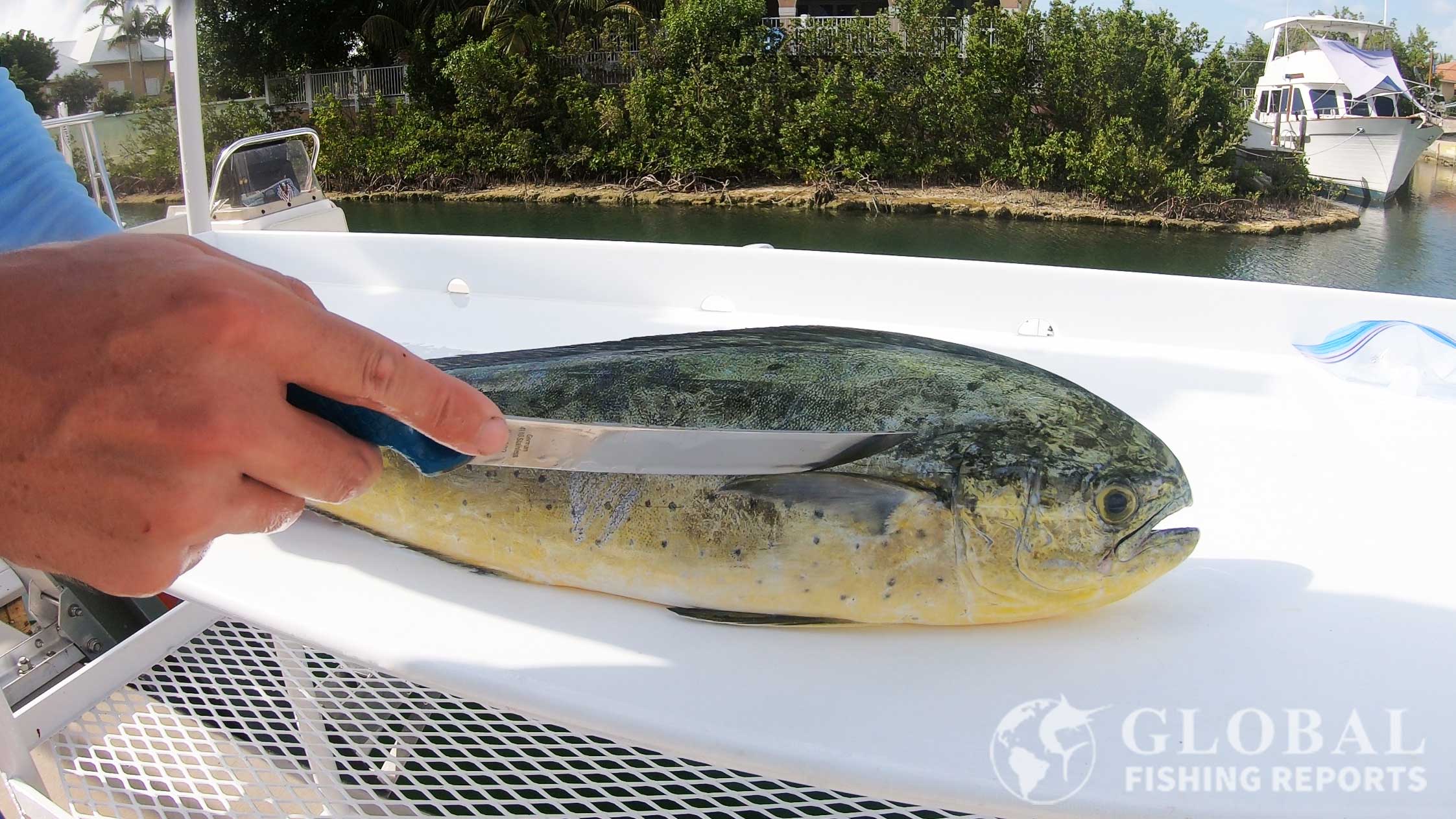
In the photo above I am cleaning a mahi-mahi with a Cuda Titanium bonded fillet knife.
Cuda does have a 6-piece fillet knife set with carbide sharpener, carry case, and four different sizes knife. The knives are a 2.5-inch bait knife, 6-inch boning knife, 6-inch fillet knife, and a 9-inch chuch knife with a serrated blade. Just having a 6-inch or 7-inch fillet knife is all that you need in most cases for cleaning fish though. Having a good sturdy bait knife is nice as well as fish gutting fish and cutting up bait.
In the video above I show how to fillet a yellowtail snapper using the 7-inch Cuda knife.
9. Rapala Soft Grip Fillet Knife
The Rapala soft-grip fish fillet knife comes in size of 4-inch, 6-inch, 7-1/2 inch, and 9-inch. This knife comes with a nice black sheath that can be worn on a belt.
This is one of the most common fillet knives that you see used by recreational fishermen. It is a low-cost knife that gets the job done. This knife also comes with a red carbide sharpener. This is really important to have to keep the knife sharp. A cheap knife that is sharp will still works way better than an expensive knife that is dull.
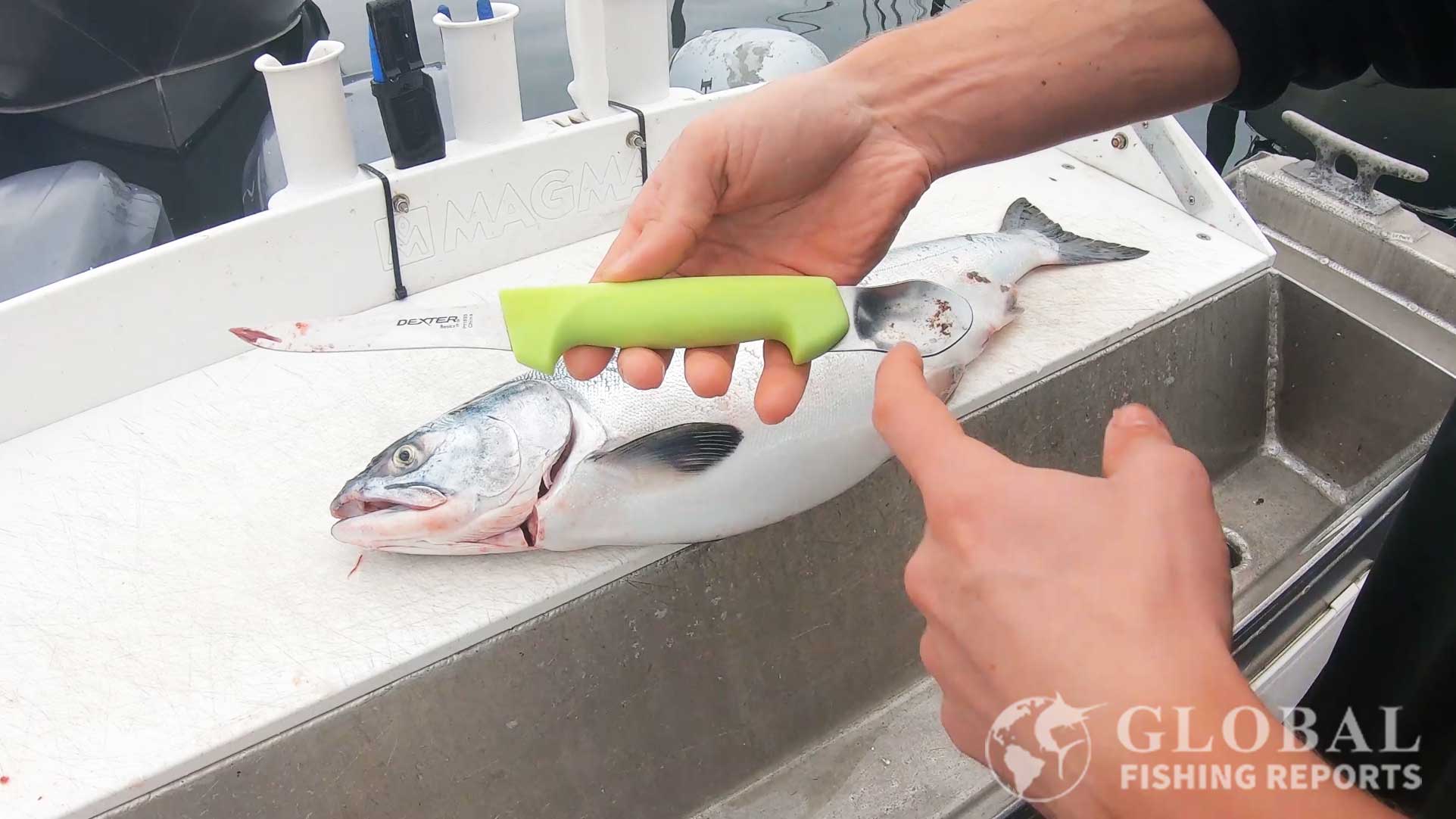
In the photo above I am showing how to gut and gill a salmon with a fillet knife that has a built in spoon to help scoop out the bloodline.
10. Rapala Superflex
This fishing fillet knife is available in 4-inch, 6inch, and 7.5-inch blade lengths. Included is a beautifully crafted leather sheath. The Superflex steel blades allow the knife to bend to make filleting fish easier.
The Superflex line of fillet knives from Rapala really exceeds expectations and looks great while doing it. Of course, it’s implied by the name, but I must say, these knives are extremely flexible, hinging on the line between Superflex and too much flex!
If you know how to use a fillet knife properly, these are downright amazing. The control and maneuverability these knives offer are unrivaled in the budget category but since they are so flexible, you have to be really careful about how you use them because they are easily snapped when flexed too far.
The knife is exceptionally finished. The polished brass ferrule is a great little decorative touch and the handle is a beautiful wood finish, all topped off and protected by a tooled leather sheath with a belt loop.
Something interesting I noted when reviewing this knife was the PTFE non-stick coating Rapala claims to enhance filleting. If you’ve used high-quality fillet knives before, you probably won’t notice much difference, but if you’re coming from filleting with the wrong type of knife, the non-stick coating certainly is a nice touch and makes thing a tad bit easier.
My only gripe here is that the sheath isn’t lockable, which really isn’t a big deal as the sheath fits rather tight anyways.
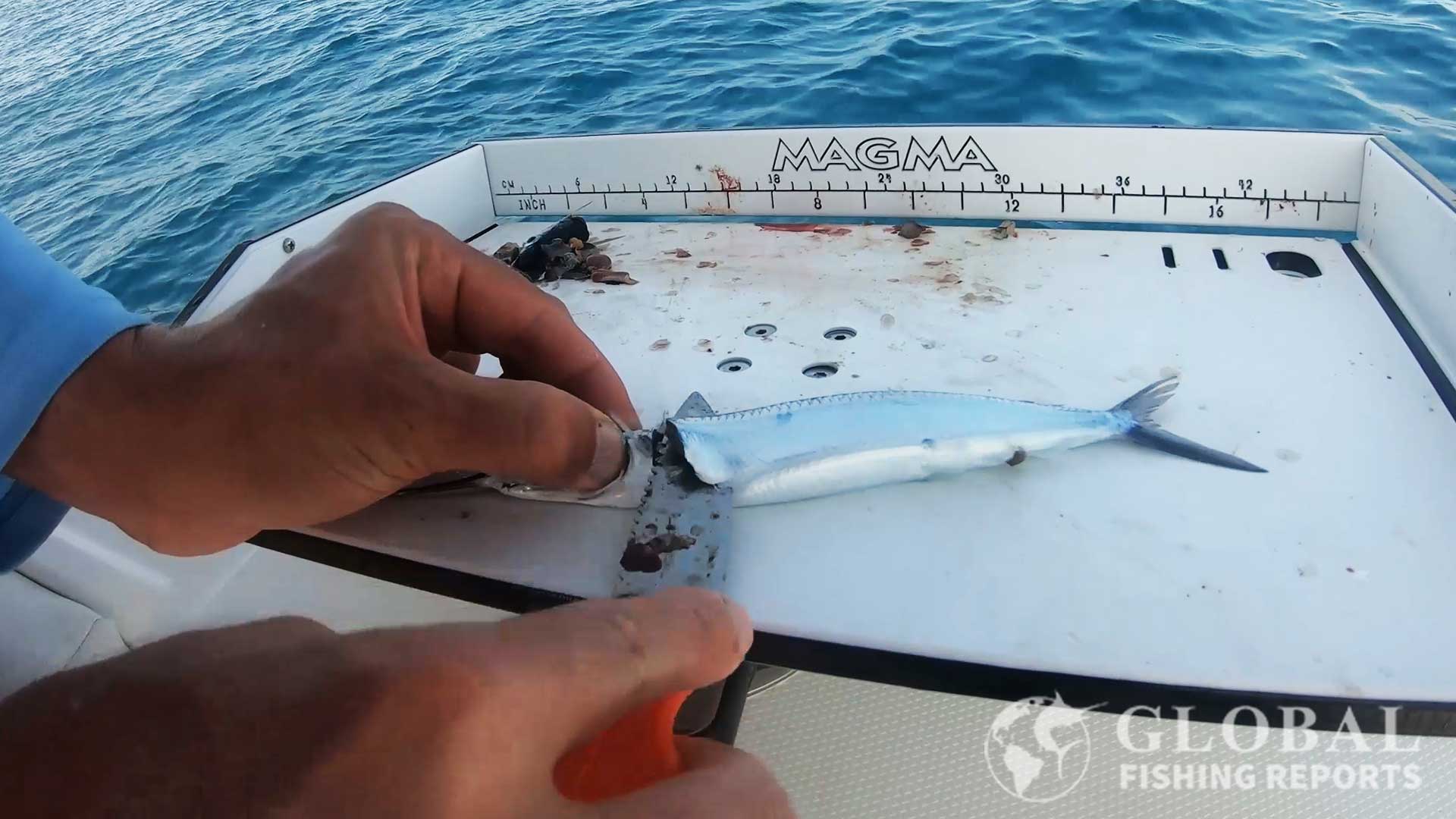
11. Cutco Fisherman’s Solution Fillet Knife
Estimated Price: $200
The Cutco Fisherman’s solution has a stainless steel blade that is adjustable from 6-inches to 9-inches. The case has a built-in line cutter and hook sharpening stone. This knife has a forever guarantee.
This knife case also serves as pliers or fish grippers. This seems like a silly feature but there have been many times when I am fishing and could use pliers.
I actually got this knife as a fishing giftwhen I was younger and really like the knife. It is top quality and works great at filleting fish. These knives use to only be sold by Cutco sales representatives that would do demonstrations with the product. Now you can get these knives online.
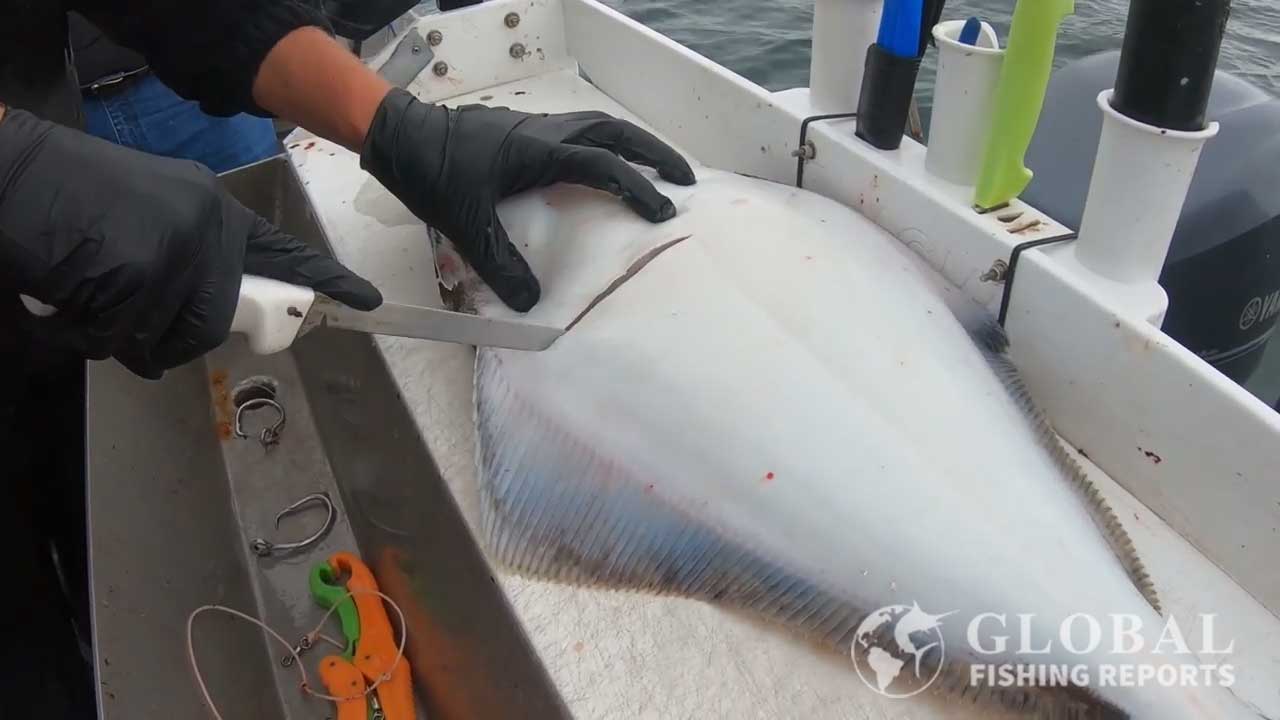
Fillet Knife Length and Thickness
As mentioned before, most fish fillet knives fall into the 4″ to 11″ area, with some specialty fillet knives exceeding one foot. When shopping for fish fillet knives, it’s likely that you’ll see 4 inches, 6 inches, 7.5 inches, and 9 inches knives the most, as these are the most popular and generally fit everyone’s needs.
The length of your knife is very important to consider as this will change its behavior, flexibility, weight, and durability. Smaller fish are much easier to fillet with smaller blades and vice versa! The length you need is the length it takes to reach all the way across the entire fillet, as the idea here is to fillet your fish in the lowest number of pieces possible!
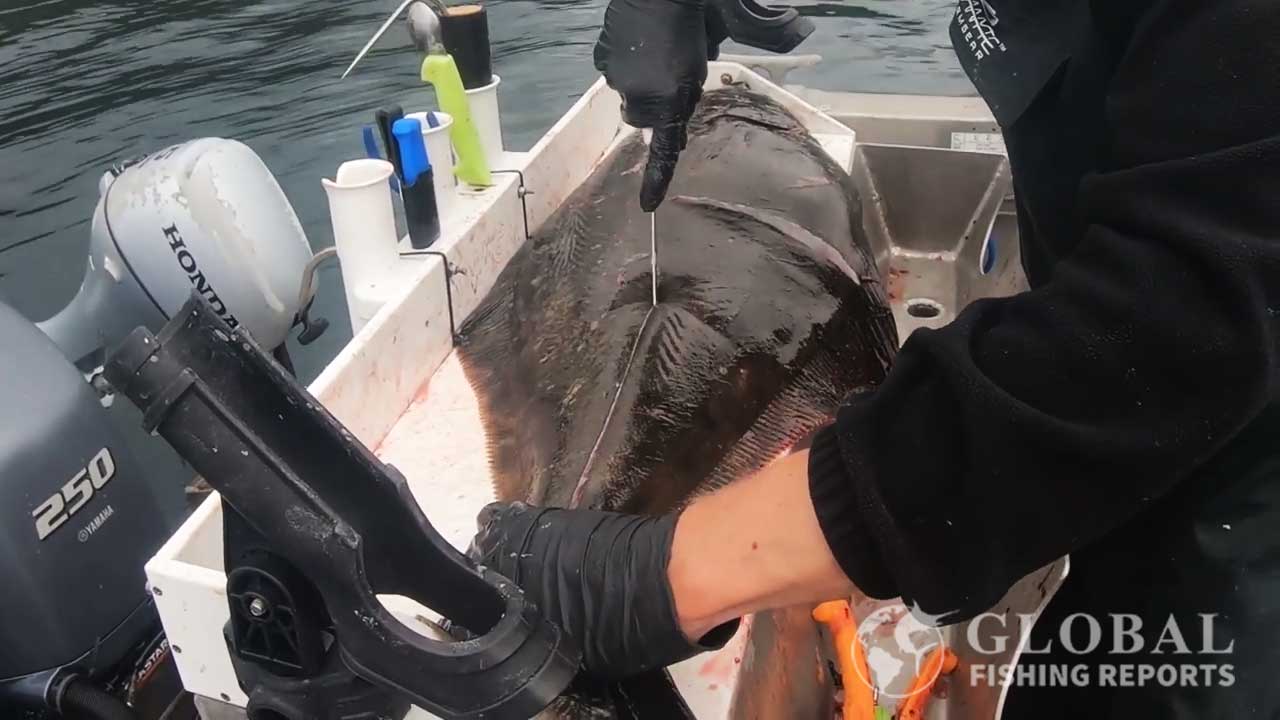
With that said, if you’re fishing ventures consist primarily of a single species or species that are all relatively the same size, you’ll probably get away with buying one good fillet knife fit for that species. If you’re like me and you try to catch everything that moves, you may need an array of different knives, all with different lengths and characteristics for different fish.
Generally, shorter blades also result in thinner blades and your blades on the upper echelon of the spectrum tend to be thicker. Generally, fish fillet knives are found in the ballpark of 2.5 to 4mm in thickness at the spine.
Thicker blades are much more durable and also tend to hold an edge significantly better, however, there is a tradeoff here. The thicker the blade, the more difficult it may be to maneuver and cut with. In my experience, I’ve always enjoyed using the thinnest blade possible, especially when removing the skin from the fillet.
Ultimately, the thickness you need will likely depend on the length you need. A really long knife that is also super thin won’t be very easy to use as it may flex too much and, of course, are extremely easy to bend and break. Longer blades are typically used with much larger, more difficult to fillet fish, so a higher level of thickness is usually in order anyways!
Fillet Knife Flexibility
Fish meat, for the most part, is typically very soft compared to the meat you’d find from many other animals. Have you ever had a thick juicy cut of steak? Yeah, that cut likely started with a thick and sturdy cleaver-type knife that is almost a necessity just to separate portions.
With fish, you won’t run into many situations where you need a bit of muscle, and instead, you’ll find that just about any blade will slice right through most fish meat with ease. Filleting a fish becomes more of an art form, with gentle strokes of precision as opposed to cleaving meat slabs in half with a heavy blade.
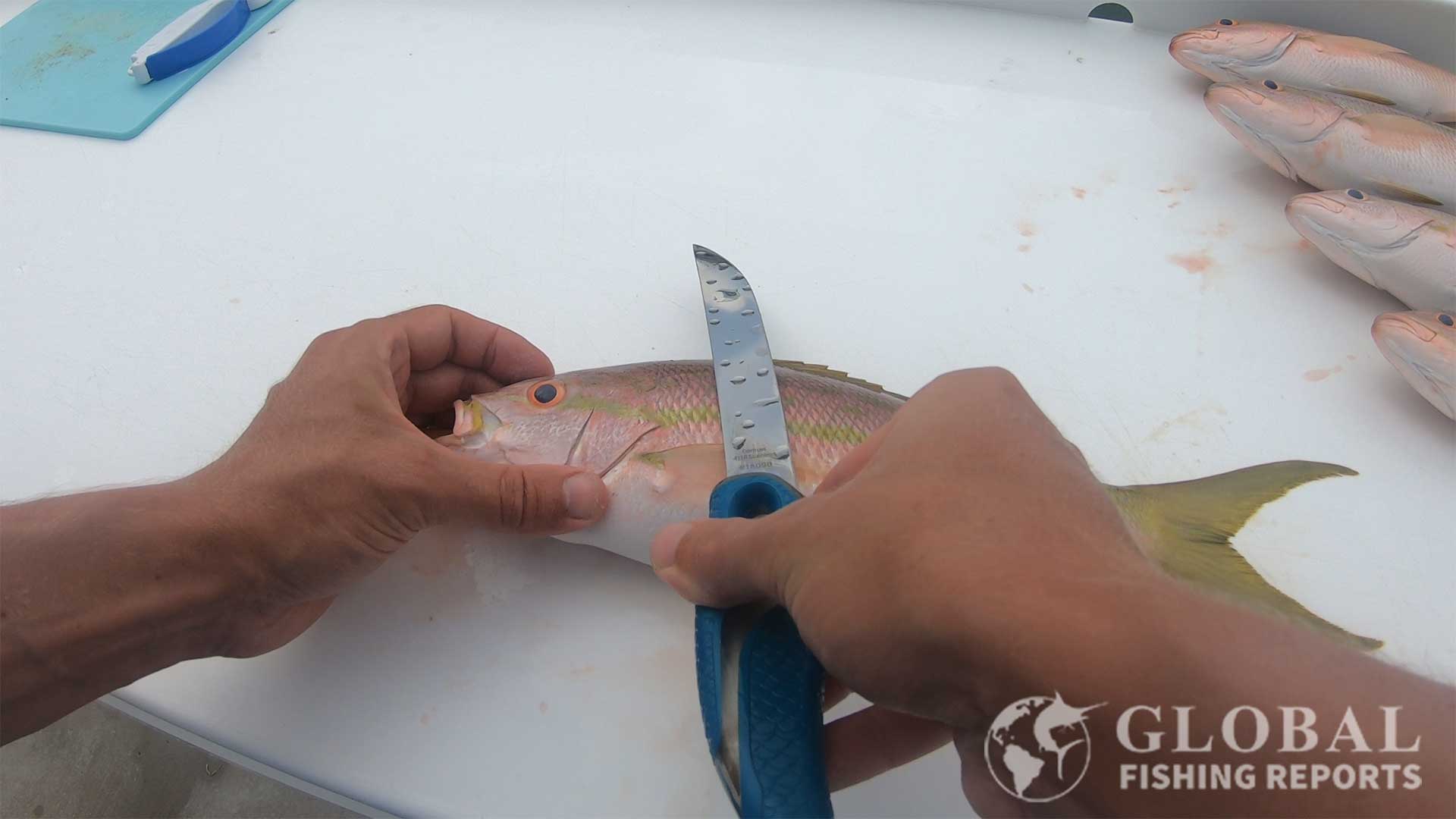
Filleting a fish is tricky, there are a lot of tiny bones packed into a small space, right next to the sweet meat you’re trying to get to. A fillet knife with a decent level of flex to it will allow a much greater level of maneuverability through the maze of bones and tissue, allowing you much greater control over your cut.
In my experience, I have always benefited from using a fish fillet knife as opposed to a typical kitchen blade. There have been countless times when I had to leave meat and come back to it because I wasn’t using a proper fillet knife, and in turn, my finished products were often quite ugly and ended up in odd shapes that make cooking a bit more difficult than it should have been.
Using a fillet blade with plenty of flex simply allows the user to remove a much higher amount of meat in one swift movement instead of digging out meat that was too close to the bone for your rigid blades to reach.
Properly Maintaining Your Fillet Knives
Manual Knife Maintenance
For manual knives, regular sharpening before each filleting session is crucial. When I’m out on charter trips, I always have my carbide sharpener on hand. After use, thoroughly cleaning and completely drying your knife before storage will significantly extend its life, especially if you’re using it in saltwater environments. Salt can quickly corrode even high-quality blades if left untreated.
For knives with wooden handles, occasionally treating the wood with mineral oil will prevent cracking and deterioration from constant exposure to water.
Electric Knife Maintenance
Electric knives require additional care. After each use, wipe down the motor housing with a damp cloth (never submerge it!), and carefully clean the blades after removing them from the unit. Many anglers make the mistake of not fully disassembling their electric knife for cleaning, which can lead to fish residue building up in hard-to-reach places.
For cordless models, proper battery management is essential. Don’t let batteries completely drain before recharging, and follow the manufacturer’s recommendations for battery care.
Captain Cody has worked on charter fishing boats in the Florida Keys, Virgin Islands, and Alaska. Growing up in Pennsylvania Cody has also done extensive freshwater fishing including bass fishing tournaments. Cody strives to provide detailed information about the best fishing gear and tactics to help both novice and experienced anglers have a more productive and enjoyable time on the water. Cody also has a background in aerospace engineering and neuroscience but really only takes pride in being good at one thing and that is fishing!







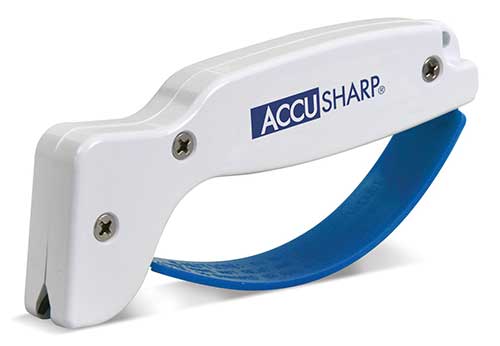




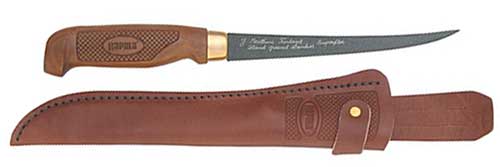
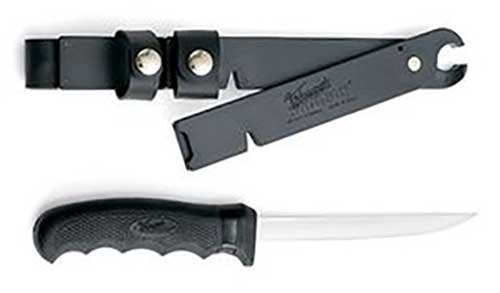
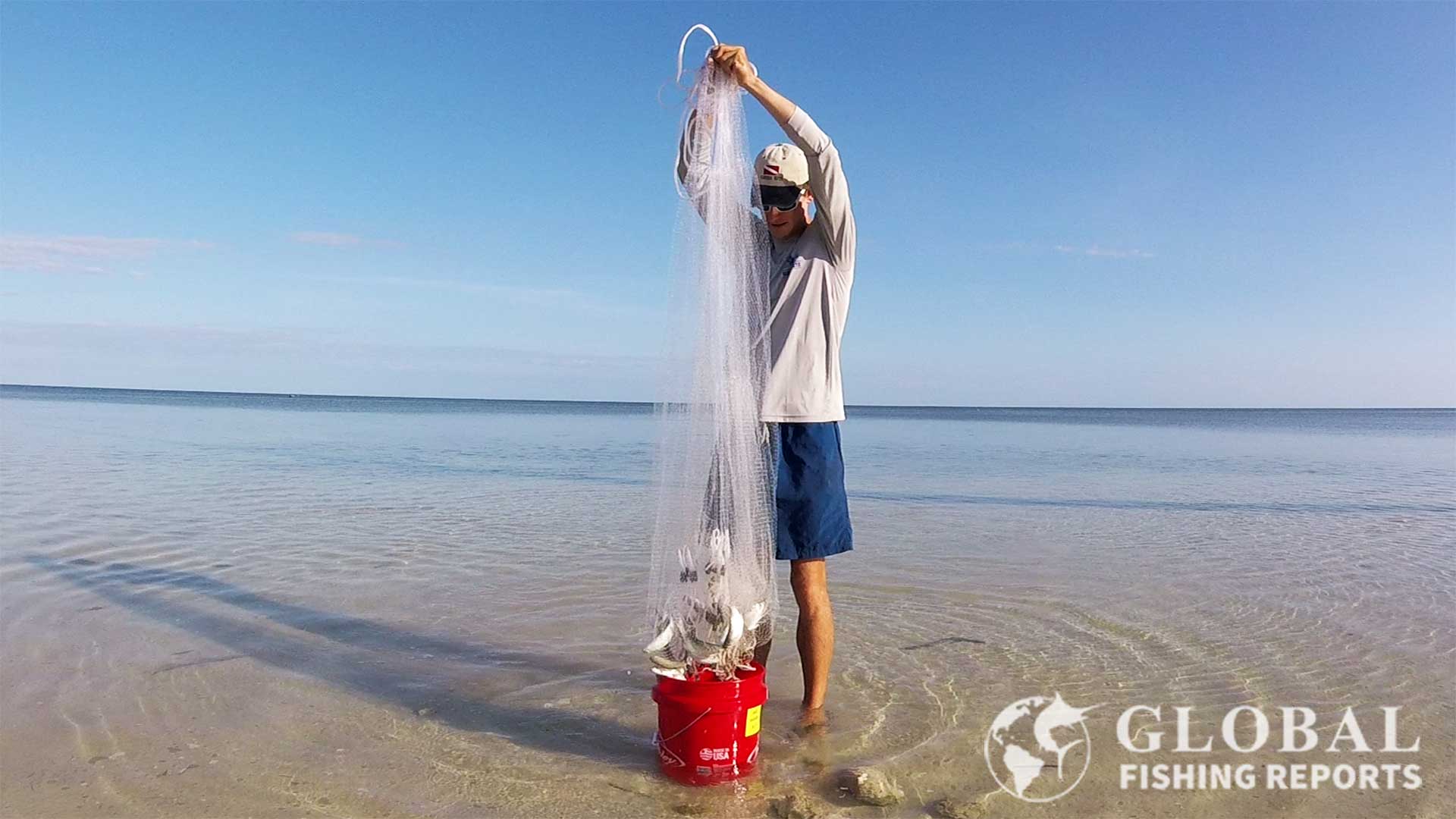
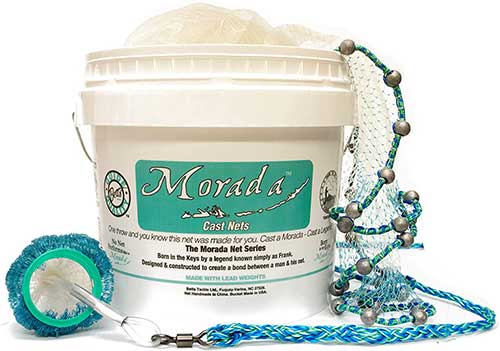


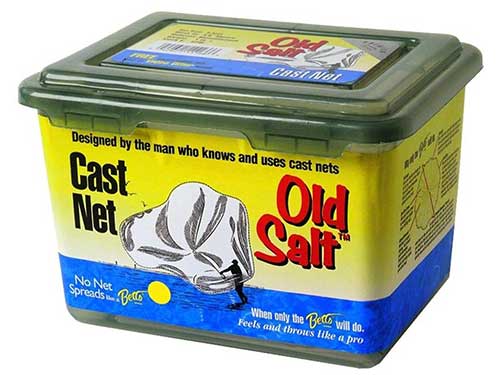
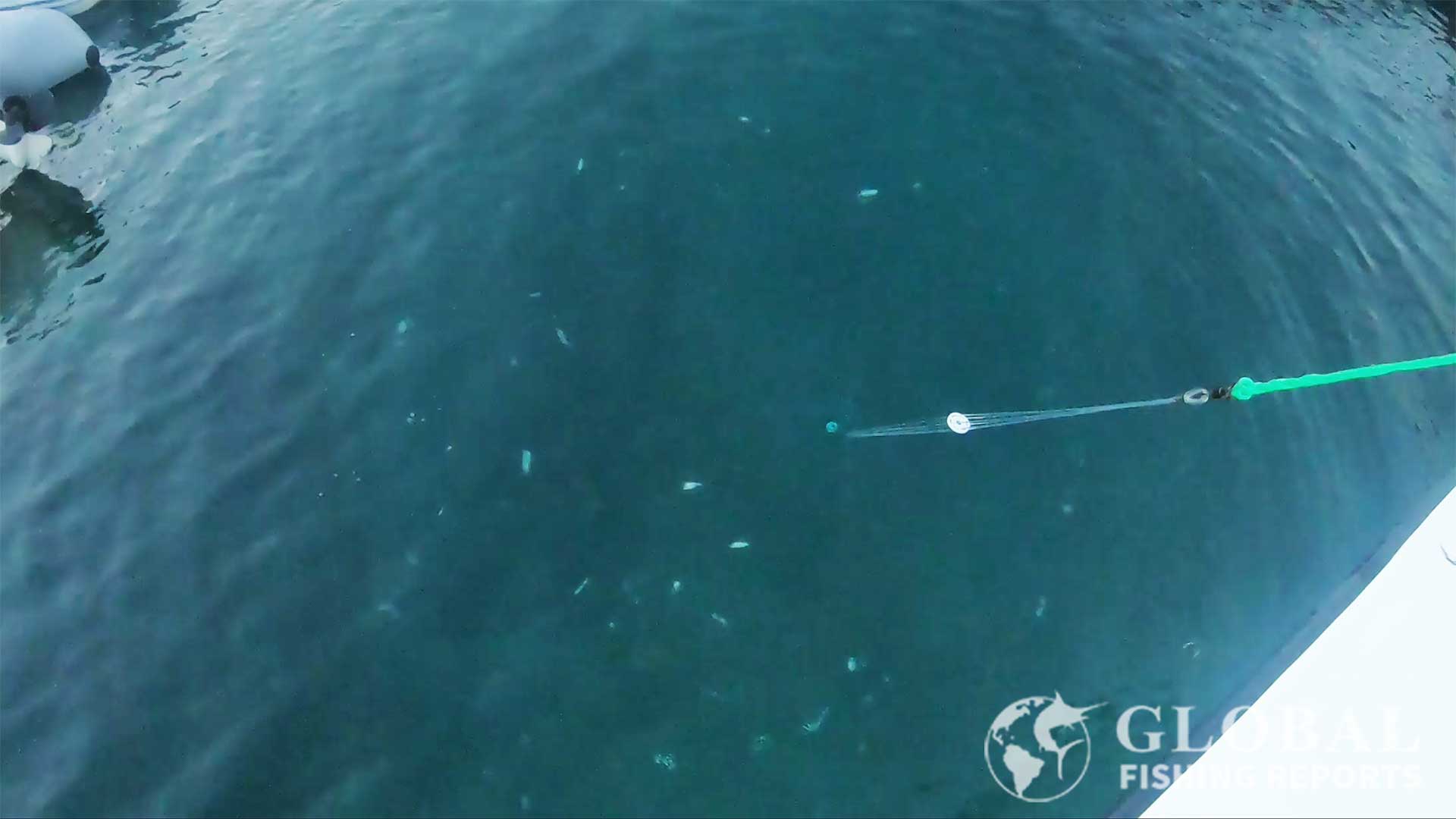
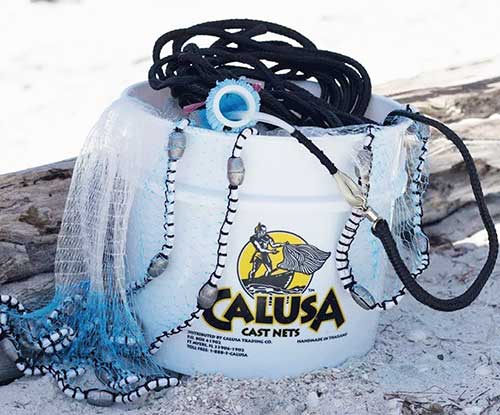
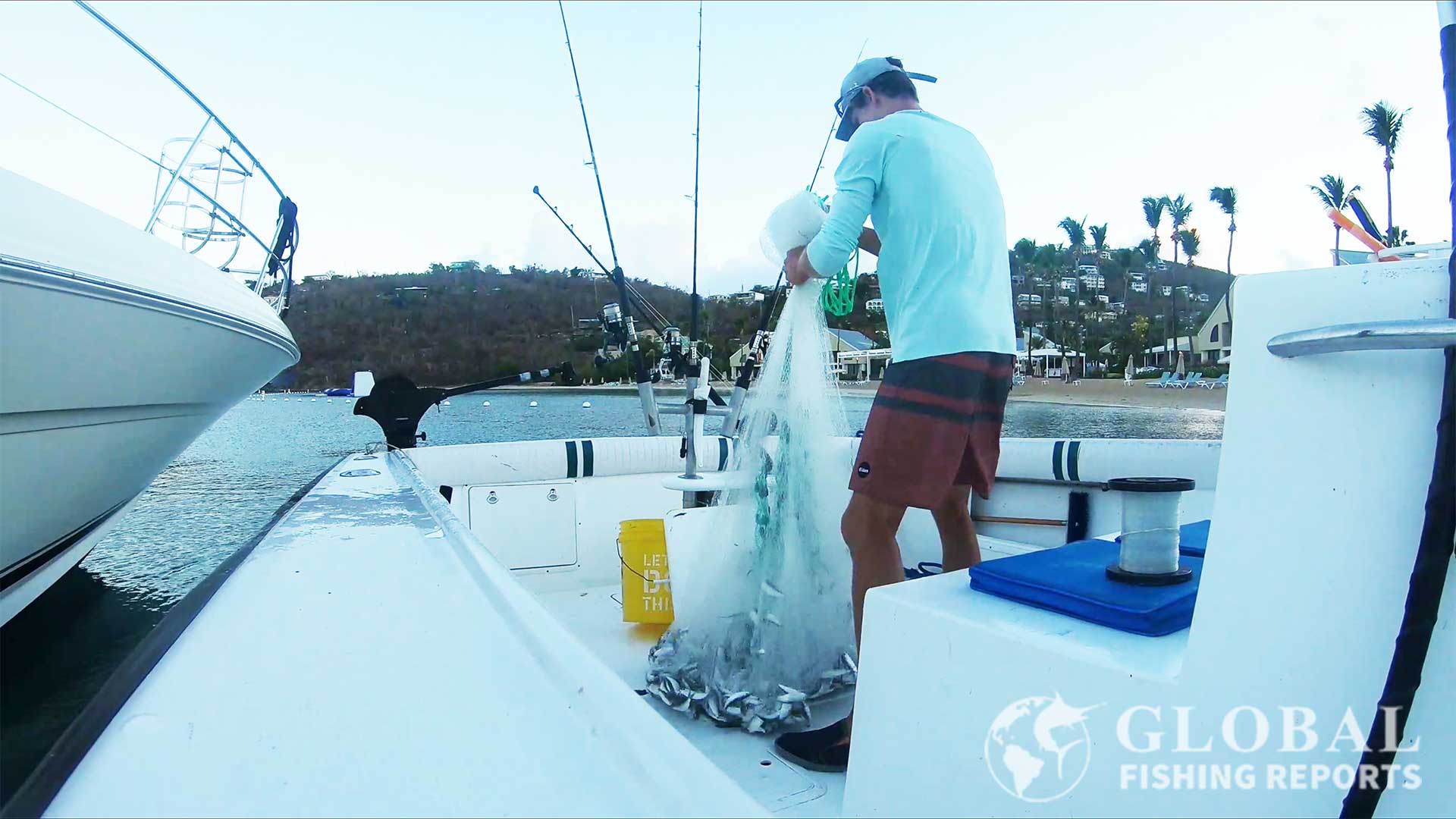
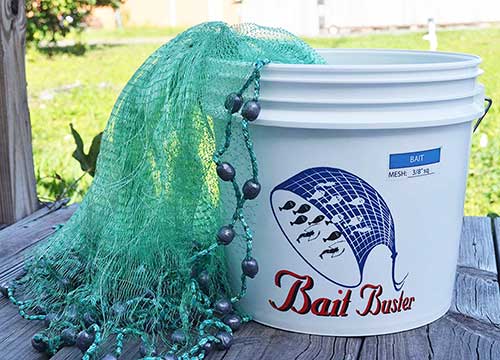
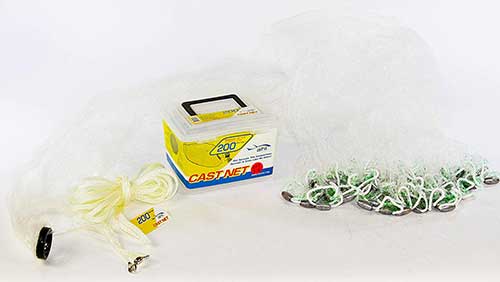
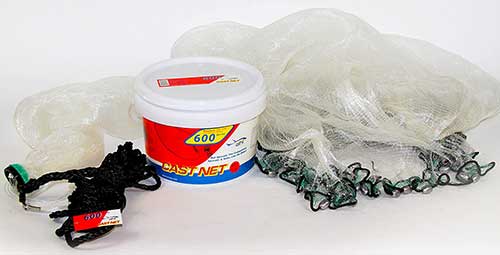
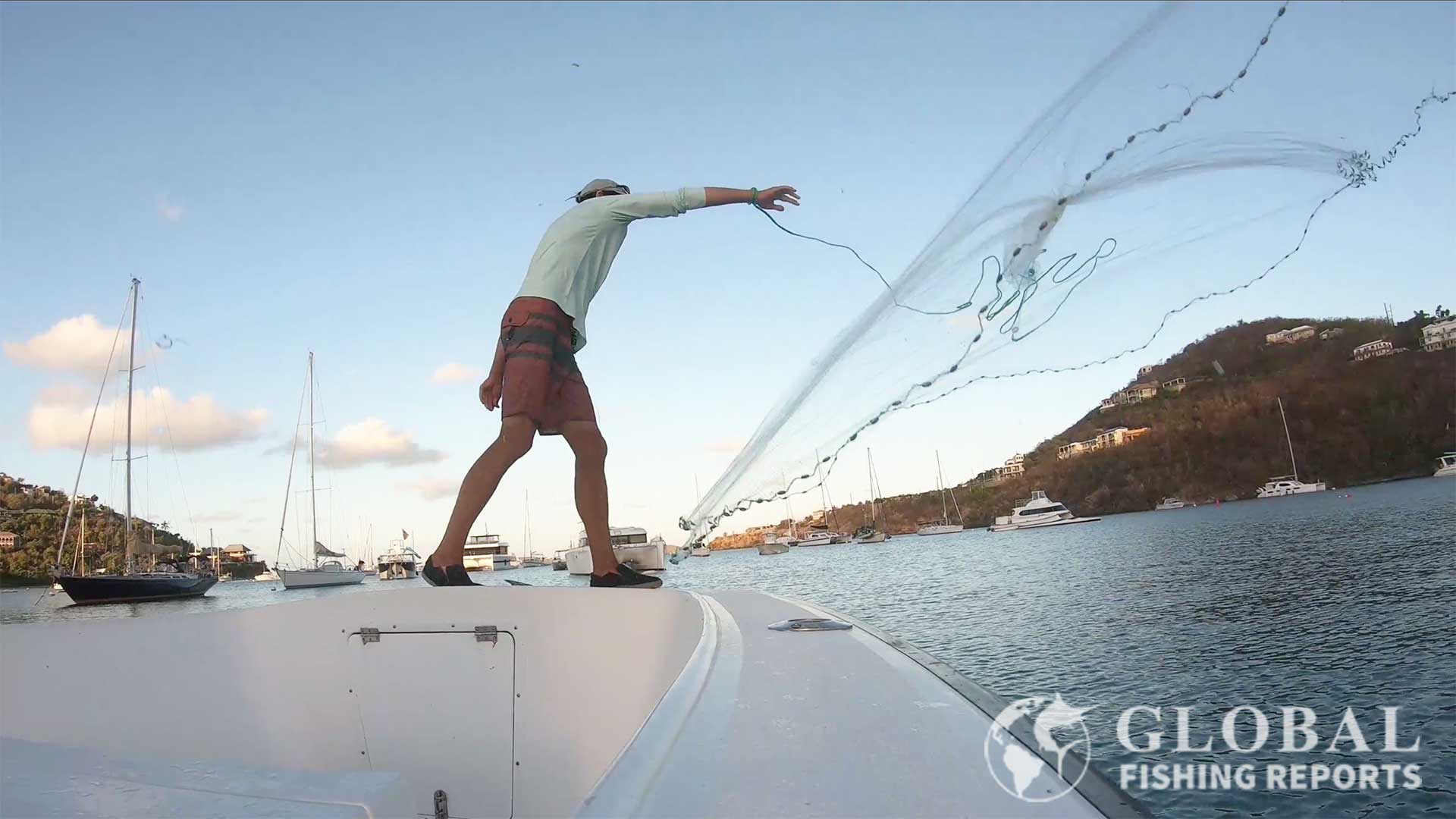 I am throwing a 12-foot cast net in the USVI.
I am throwing a 12-foot cast net in the USVI.
